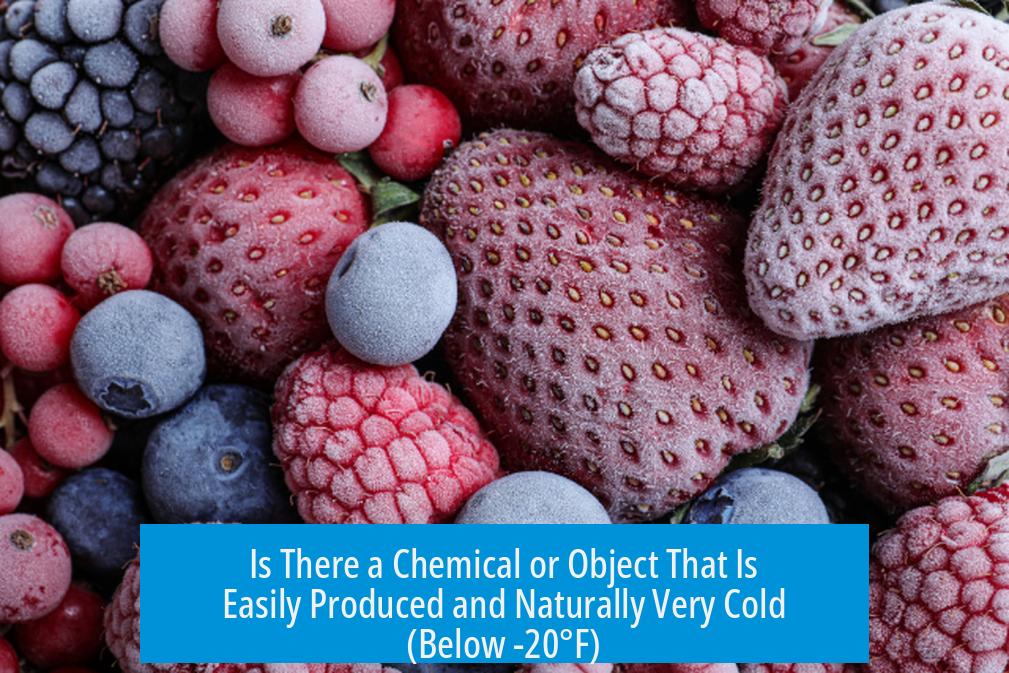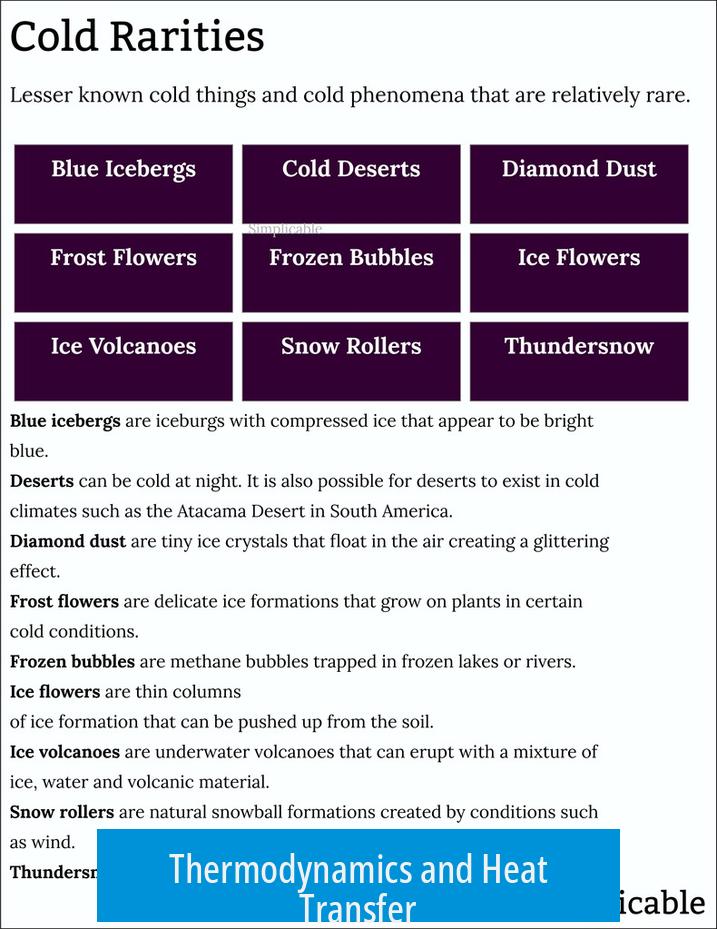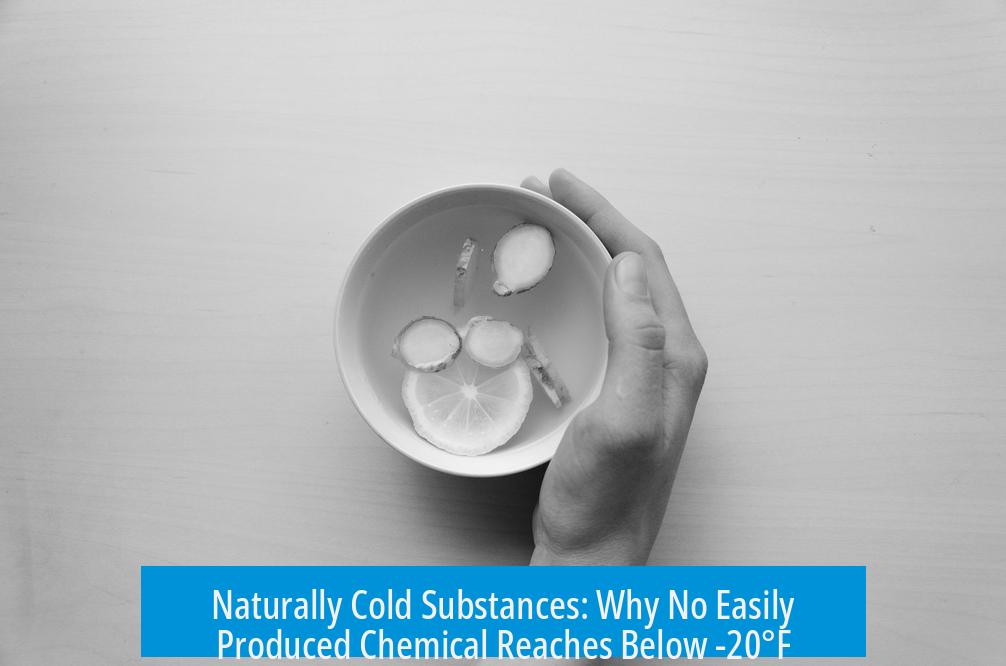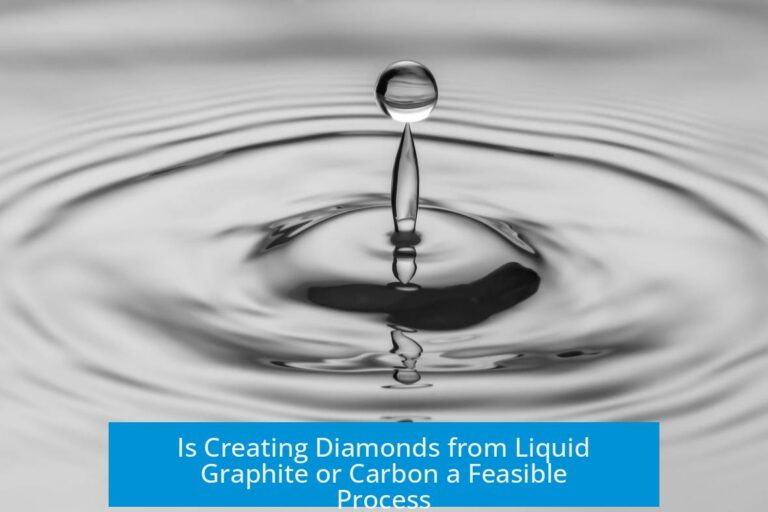Is There a Chemical or Object That Is Easily Produced and Naturally Very Cold (Below -20°F)?

There is no chemical or object that is easily produced and naturally cold below -20°F because coldness is not an intrinsic property but a state achieved by removing thermal energy from a material. Any substance colder than its surroundings must have lost heat through energy transfer or active cooling.
Understanding “Naturally Cold” Substances
The idea that something is “naturally cold” is misleading. Temperature depends on thermal energy relative to an environment. No material possesses fixed coldness; it cools down only by losing energy.
In practical terms, “cold” means “having less energy” than a reference point. That relates directly to fundamental physics principles. Conservation of energy means substances cannot be “naturally cold” without an external cause.
Thermodynamics and Heat Transfer

Heat transfers spontaneously from warmer to cooler areas. This principle, governed by the second law of thermodynamics, forbids any object from being inherently cold independently.
Thus, all passive cooling requires a temperature differential. A material only feels cold because it absorbs heat from something warmer—like your skin or the air.
Common “Cold” Materials and Their Origins
- Liquid Nitrogen: Extremely cold at −320°F, liquid nitrogen looks naturally cold but is a product of energy-intensive liquefaction of atmospheric nitrogen.
- Dry Ice (Solid CO2): Solid carbon dioxide sublimates at −109°F. It feels very cold but is manufactured through pressurization and refrigeration processes.
- Instant Cold Packs: Cold packs use chemicals such as ammonium nitrate dissolved in water. The dissolution absorbs heat, creating a cooling sensation, yet the chemicals themselves are not inherently cold.
- Evaporative Cooling (Acetone and Alcohol): Volatile liquids feel cold when they evaporate because the phase change absorbs heat from surfaces such as skin.
Why No “Easily Produced” Naturally Cold Substances Exist
“Easily produced” implies low-energy or simple processes. However, reaching temperatures below −20°F requires energy removal. This typically demands refrigeration or liquefaction, which are complex and energy consuming.
Natural Earth environments rarely maintain such low temperatures without specific climatic conditions. Substances like water or air only reach low temperatures near poles or in controlled lab settings, not spontaneously anywhere.
Therefore, substances perceived as “naturally cold” are always the consequence of prior cooling or phase changes that absorb energy.
Phase Changes and Cooling Effects
Phase transitions absorb or release heat. Examples include:
| Material | Phase Change | Cooling Mechanism | Approx. Temperature |
|---|---|---|---|
| Dry Ice (CO2) | Sublimation (solid to gas) | Heat absorbed by sublimation | −109°F (−78.5°C) |
| Liquid Nitrogen | Boiling/evaporation | Removes heat as it vaporizes | −320°F (−196°C) |
| Instant Cold Pack (Ammonium Nitrate solution) | Dissolving solid into liquid | Endothermic dissolution absorbs heat | Ambient to below 0°F possible briefly |
These materials require energy input beforehand and controlled handling to maintain low temperature. Their coldness is a transient state enabled by physics, not a fixed natural property.
Biological and Practical Cooling Systems
Humans use evaporative cooling through sweating, relying on phase changes to remove heat. Similarly, specialized suits use compressed gases or cooled fluids linked to refrigeration units.
These systems prove that sustained cold requires active heat removal, not passive “natural” cold substances.
Summary of Key Points
- Temperature depends on thermal energy relative to the environment; no material is inherently cold.
- The second law of thermodynamics forbids spontaneous coldness without heat removal.
- Materials like dry ice and liquid nitrogen are very cold but require energy-intensive production.
- Evaporative and endothermic dissolution effects cause cooling sensations but do not create inherently cold substances.
- No chemical or object that is naturally and easily produced consistently remains below −20°F without refrigeration or complex processes.





Leave a Comment